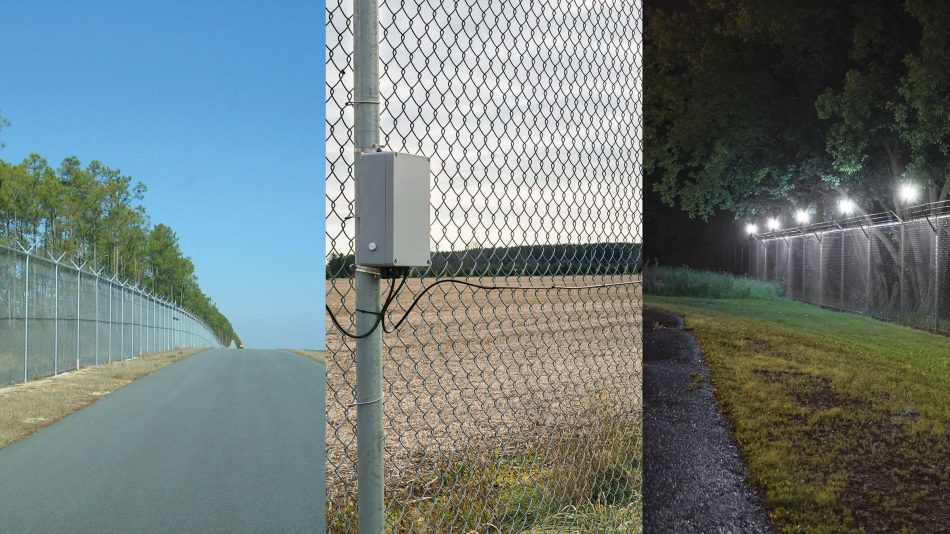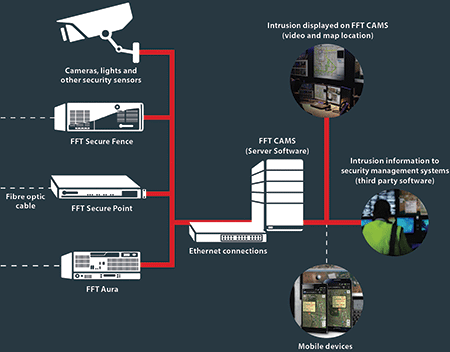The Importance of a Fiber Optic Security System in Protecting Sensitive Data and Areas
The Importance of a Fiber Optic Security System in Protecting Sensitive Data and Areas
Blog Article
Boost Your Safety And Security With Advanced Fiber Optic Security Solutions
In an era where safety and security is extremely important, advanced fiber optic safety systems provide a compelling remedy for enhancing security across different settings. These systems not only flaunt exceptional transmission capacity and speed for high-resolution monitoring yet also supply amazing durability versus exterior disturbances. As companies progressively seek trusted means to protect their possessions, the assimilation of ingenious modern technologies like AI and IoT within fiber optic frameworks elevates vital inquiries about their effectiveness contrasted to conventional systems. What implications do these developments hold for future safety and security procedures?
Benefits of Fiber Optic Safety
Harnessing the advantages of fiber optic modern technology dramatically enhances safety systems across different applications. Among the main advantages is the increased bandwidth capability, enabling the transmission of big quantities of information at high rates. This is especially essential for real-time video monitoring, where high-resolution feeds can be sent out without latency, guaranteeing prompt response capabilities.
Additionally, optical fiber exhibit exceptional resistance to electro-magnetic disturbance, which is vital in atmospheres with prospective signal interruptions. This integrity makes sure constant performance in vital safety operations. Fiber optic cable televisions are much less susceptible to touching and unauthorized gain access to contrasted to conventional copper circuitry, consequently enhancing data stability and discretion.
Another remarkable benefit is the longevity of fiber optic systems; they are a lot more resistant to environmental aspects such as wetness, temperature changes, and corrosive materials. This strength translates to decrease maintenance prices and longer lifespans for safety and security installments.
Lastly, the light-weight nature of fiber optic cable televisions facilitates much easier installment and routing, particularly in complex facilities (fiber optic security system). Eventually, the integration of fiber optic modern technology right into safety systems not just boosts defense actions but likewise enhances functional efficiency
Key Attributes to Think About
When evaluating fiber optic security systems, a number of vital functions must be taken into consideration to ensure ideal performance and performance. Examine the system's discovery array and level of sensitivity; an extensive variety enables for keeping an eye on big locations, while high sensitivity makes sure that also small disturbances are spotted without delay.
Next, think about the combination abilities of the system. A fiber optic security system need to effortlessly interface with existing safety actions such as cameras and alarm systems, creating a cohesive safety network.
Longevity and ecological resistance are likewise critical features. Ensure that the system is developed to withstand harsh weather conditions and potential physical dangers, as this will lengthen its functional life-span.

Lastly, consider the scalability of the system. A robust fiber optic safety system need to be easily expanding to suit future demands without considerable overhauls. By very carefully considering these functions, you can choose a fiber pop over to this web-site optic safety and security solution that boosts security and safety and security in your setting.
Installation Process Overview
To successfully implement a fiber optic safety and security system, an organized installation procedure is vital. This process starts with a comprehensive site evaluation to figure out the specific protection needs and to determine optimum areas for fiber optic cables and protection tools. Following this analysis, the installment group will certainly create a comprehensive strategy, including wire paths, essential equipment, and compliance with local policies.
Following, the setup involves laying the fiber optic cables, guaranteeing they are safeguarded from environmental elements and physical damages. Appropriate handling strategies are crucial, as fiber optic cords are sensitive and can be conveniently harmed. After the cabling is installed, ports and discontinuations are carefully finished to guarantee signal honesty.
The succeeding phase consists of installing security gadgets such as video cameras, motion detectors, and alarm, all integrated with the fiber optic network. Rigorous screening is performed to confirm that all elements are working correctly and to ensure optimal performance.

Comparing Fiber Optic to Traditional Systems
The evolution of safety and security technology has caused substantial advancements in the comparison in between fiber optic systems and standard copper-based systems. Fiber optic systems make use of light to send information, providing premium bandwidth and speed compared to their copper counterparts. This results in enhanced information transmission abilities, making fiber optics optimal for high-resolution video security and real-time tracking.
Additionally, fiber optic cables are resistant to electromagnetic interference, decreasing the chance of signal degradation brought on by outside elements. This characteristic makes sure consistent efficiency, also in tough atmospheres. In comparison, standard copper systems are more susceptible to interference, bring about prospective vulnerabilities in security applications.
Sturdiness is another benefit of fiber optic systems. They are less prone to damage from environmental factors such as moisture and temperature level variations, which can endanger copper circuitry. Moreover, optical fiber are lighter and thinner, permitting for easier installment and lowered physical impact.
However, typical systems often tend to have reduced preliminary visit the website expenses, making them eye-catching for budget-conscious jobs. While fiber optic systems may require a higher in advance investment, their long-term benefits-- such as reduced maintenance expenses and better dependability-- typically surpass the initial expense, positioning them as a premium choice for contemporary protection requirements.
Future Patterns in Protection Innovation
Emerging fads in security technology are poised to change the landscape of surveillance and risk discovery - fiber optic security system. As companies progressively deal with sophisticated risks, developments such as expert system (AI) and maker knowing (ML) are becoming essential to safety systems. These innovations enhance the capability of fiber optic systems by making it possible for real-time data analysis, recognizing anomalies, and automating reactions click for info to possible violations
In addition, the integration of the Net of Things (IoT) is transforming security structures. IoT tools can provide extensive situational understanding and facilitate smooth interaction in between various protection components. This interconnectedness enables extra efficient monitoring and faster incident action times.
Biometric authentication is additionally getting energy, offering a higher level of safety and security via special physical characteristics. As this modern technology evolves, it is most likely to be incorporated into fiber optic systems for boosted access control.
Verdict
In final thought, advanced fiber optic safety systems represent a significant innovation in security and security technology. The transition from typical systems to fiber optic solutions mirrors a growing pattern towards more efficient and efficient protection steps in a progressively complex technological landscape.
Report this page